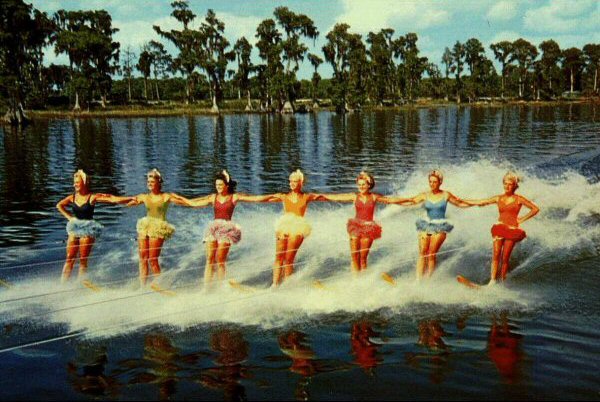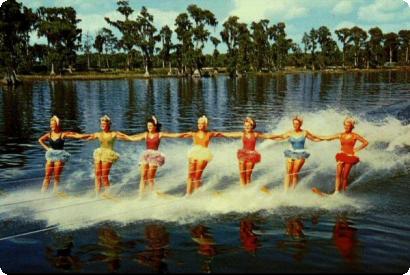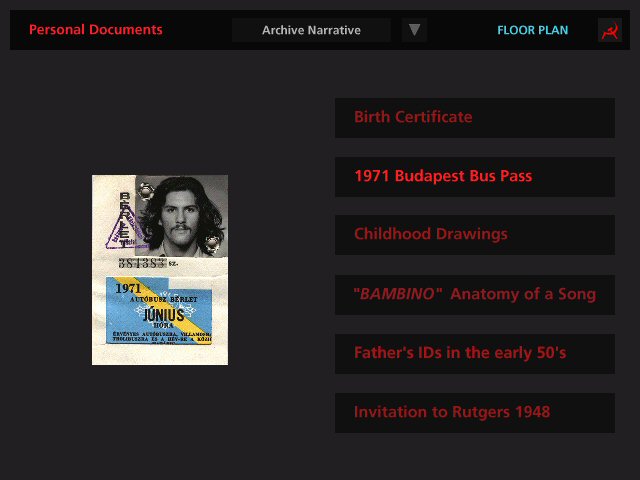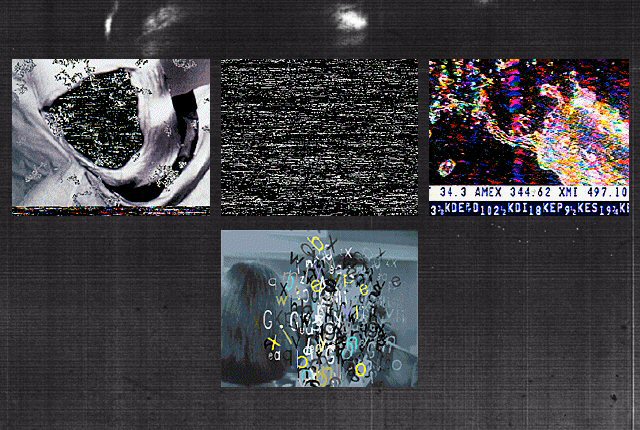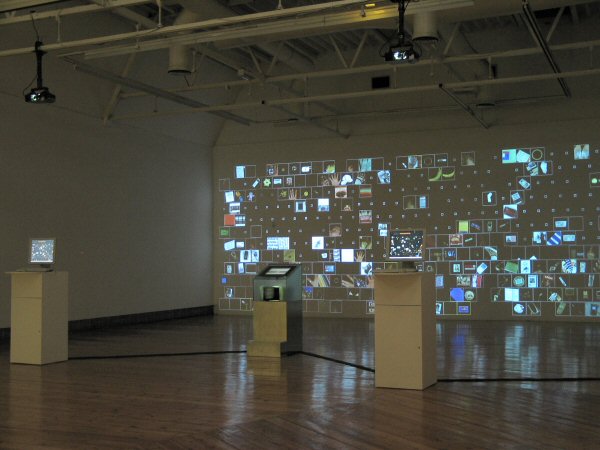Please wait a few moments while we process your request

George Legrady
(Santa Barbara, California, United States)
George Legrady was born in 1950 in Budapest, Hungary. In 1956, after the Soviet invasion of his country, his family immigrated to Canada where they settled in Montreal. He studied photography at Montreal's Loyola College in 1969 with Charles Gagnon and John Max and at Goddard College in Vermont in 1972. These studies led him at first to a photographic practice that was social and documentary, although artists like Charles Gagnon did sensitize him to formal questions. It was, however, upon obtaining a master of fine arts degree from the San Francisco Art Institute in 1976 that his real trajectory as an artist started. He has taught new media at the Merz Akademie in Stuttgart, Germany, and he now serves as a professor of digital media at the University of California at Santa Barbara.
After graduate studies, his photographic work took a conceptual turn that questioned the foundations of the photographic image, along with its relationship to reality and its modes of reception. Legrady discussed this in a recent interview :
"The images that I make are not so much a result of my particular individual authorship, but rather, shaped and channelled through institutionalized conventions that led to the camera being designed in a particular way and the photograph resulting in a particular standardized form." (1)
In short, the images he produces thwart conventions, but in ways that make those very conventions more perceptible to viewers. In the seventies, Legrady created photographic series such as Catalogue of Found Objects (1976) and Floating Objects (1980) in which he strove to decontextualize found objects. In Floating Objects, he went at night to empty lots or construction sites in search of objects, which he then tossed upward and shot with flash as they were suspended in the air, the raw light making them stand out on an uncertain background. The National Gallery of Canada's CD-ROM From Analogue to Digital: Photography and Interactive Media (2) reproduces these photographic works as well as later work by the artist.
In the early eighties, George Legrady's interest turned to computers, and computer-generated and digitally altered images. He learned programming and kept pursuing his photographic concerns using computers. In the same interview, Legrady elaborated on this :
"One of my goals in working with computers and computer programming was to introduce works that would somehow test the boundary between the believable and the simulated; something would appear to be a photograph or come out of the photographic technology but it in fact would be primarily the result of algorithmic processes. Eventually this work led to a lot of experimentation with digital image processing in the mid- to late 1980s and I did my first interactive work, titled Equivalents II, which was included in the Iterations and Photography After Photography exhibitions, both of which explored the relation between image, culture and technology." (3)
In the same period, just before Equivalents II (1992-1994), Legrady produced several image series that were either computer-generated or altered. Among these were Authority of the News (1987), Poetics of the News (1987), The Noise Factor (1988) and Words and Words (1990). In these works, rather than using found objects as a starting point, as in his first photo series, the artist relied on "found images," particularly from the TV news, which he then altered digitally. The Noise Factor was, in this sense, emblematic of a whole problematic wherein Legrady added noise to images he had selected from television. This notion of "noise" is clearly derived from information theory where noise is not only a factor that clouds messages but also a sign and measure of the entropy of systems
With Équivalents II in the early nineties, Legrady started to work interactively. Equivalents II, which is designed to be viewed on computer, allows the user to enter a text - a phrase, in fact - that is then transformed into an image by means of a fractally generated algorithm. The title positions this algorithmic design in relation to the Alfred Stieglitz work Equivalents (1922). (4) . The on-screen result, the image produced from the phrase, has little relationship, in iconic terms, with the phrase. Legrady has often mentioned his interest in the writings of Roland Barthes, and we can surmise that this work explores the relationship of language to iconic representation, as Barthes did in several of his texts.
But it was An Anecdoted Archive From the Cold War (Une archive anecdotée de la guerre froide, 1994) that brought Legrady recognition as an artist whose work investigated interactivity. Of all his works, it is one of the most autobiographical. In a sense, he takes up strategies similar to those he used before, such as the cataloguing of found objects or images and their decontextualization or recontextualization by means of a mechanism he has created. This time, he built a user-navigable database that contrasts the iconography and propaganda of the capitalist West with those of the communist East, pointing most directly, one suspects, at Hungary. To consult this database, the user navigates in both personal and historical documents. The work is a demonstration of what configures a person in a given historical horizon and shows how the personal, at times, becomes enmeshed with the historical.
"In An Anecdoted Archive from the Cold War, autobiography serves, rather, to analyze the way in which the artist constructs his identity and defines his practice in a given political and social context, that of the Cold War. The collection here becomes a means of formalizing modes of identity construction" (5).
Slippery Traces (1996) returns to formal and conceptual concerns that are closer to his previous work. In this database of 230 interlinked postcards, users flick the cursor over an image to discover its programmed hotspots. In clicking on these spots, they are brought to another image, where they can continue the process to pass from one image to another. Navigation seems random, as do the links between images. Legrady wanted to explore non-linear narration in this work, taking inspiration from the French nouveau roman, particularly Last Year at Marienbad (1960) by Alain Robbe-Grillet, while also producing a techno-aesthetic that tipped its hat to Blade Runner (1982). Once again, this work plays with notions of collections, found images, and the decontextualization and recontextualization that affect a viewer's relationship to images and determine their reception.
In 1997, the National Gallery of Canada presented a solo exhibition on the works of George Legrady, spanning twenty years of photographic production and projects that featured computers and interactivity from the 1980s onward. To mark the exhibition, rather than publish a printed catalogue, the Gallery collaborated with the artist to produce a catalogue on CD-ROM. In 2005, the Daniel Langlois Foundation, with permission from Legrady, has adapted the CD-ROM for the Web.
After graduate studies, his photographic work took a conceptual turn that questioned the foundations of the photographic image, along with its relationship to reality and its modes of reception. Legrady discussed this in a recent interview :
"The images that I make are not so much a result of my particular individual authorship, but rather, shaped and channelled through institutionalized conventions that led to the camera being designed in a particular way and the photograph resulting in a particular standardized form." (1)
In short, the images he produces thwart conventions, but in ways that make those very conventions more perceptible to viewers. In the seventies, Legrady created photographic series such as Catalogue of Found Objects (1976) and Floating Objects (1980) in which he strove to decontextualize found objects. In Floating Objects, he went at night to empty lots or construction sites in search of objects, which he then tossed upward and shot with flash as they were suspended in the air, the raw light making them stand out on an uncertain background. The National Gallery of Canada's CD-ROM From Analogue to Digital: Photography and Interactive Media (2) reproduces these photographic works as well as later work by the artist.
In the early eighties, George Legrady's interest turned to computers, and computer-generated and digitally altered images. He learned programming and kept pursuing his photographic concerns using computers. In the same interview, Legrady elaborated on this :
"One of my goals in working with computers and computer programming was to introduce works that would somehow test the boundary between the believable and the simulated; something would appear to be a photograph or come out of the photographic technology but it in fact would be primarily the result of algorithmic processes. Eventually this work led to a lot of experimentation with digital image processing in the mid- to late 1980s and I did my first interactive work, titled Equivalents II, which was included in the Iterations and Photography After Photography exhibitions, both of which explored the relation between image, culture and technology." (3)
In the same period, just before Equivalents II (1992-1994), Legrady produced several image series that were either computer-generated or altered. Among these were Authority of the News (1987), Poetics of the News (1987), The Noise Factor (1988) and Words and Words (1990). In these works, rather than using found objects as a starting point, as in his first photo series, the artist relied on "found images," particularly from the TV news, which he then altered digitally. The Noise Factor was, in this sense, emblematic of a whole problematic wherein Legrady added noise to images he had selected from television. This notion of "noise" is clearly derived from information theory where noise is not only a factor that clouds messages but also a sign and measure of the entropy of systems
With Équivalents II in the early nineties, Legrady started to work interactively. Equivalents II, which is designed to be viewed on computer, allows the user to enter a text - a phrase, in fact - that is then transformed into an image by means of a fractally generated algorithm. The title positions this algorithmic design in relation to the Alfred Stieglitz work Equivalents (1922). (4) . The on-screen result, the image produced from the phrase, has little relationship, in iconic terms, with the phrase. Legrady has often mentioned his interest in the writings of Roland Barthes, and we can surmise that this work explores the relationship of language to iconic representation, as Barthes did in several of his texts.
But it was An Anecdoted Archive From the Cold War (Une archive anecdotée de la guerre froide, 1994) that brought Legrady recognition as an artist whose work investigated interactivity. Of all his works, it is one of the most autobiographical. In a sense, he takes up strategies similar to those he used before, such as the cataloguing of found objects or images and their decontextualization or recontextualization by means of a mechanism he has created. This time, he built a user-navigable database that contrasts the iconography and propaganda of the capitalist West with those of the communist East, pointing most directly, one suspects, at Hungary. To consult this database, the user navigates in both personal and historical documents. The work is a demonstration of what configures a person in a given historical horizon and shows how the personal, at times, becomes enmeshed with the historical.
"In An Anecdoted Archive from the Cold War, autobiography serves, rather, to analyze the way in which the artist constructs his identity and defines his practice in a given political and social context, that of the Cold War. The collection here becomes a means of formalizing modes of identity construction" (5).
Slippery Traces (1996) returns to formal and conceptual concerns that are closer to his previous work. In this database of 230 interlinked postcards, users flick the cursor over an image to discover its programmed hotspots. In clicking on these spots, they are brought to another image, where they can continue the process to pass from one image to another. Navigation seems random, as do the links between images. Legrady wanted to explore non-linear narration in this work, taking inspiration from the French nouveau roman, particularly Last Year at Marienbad (1960) by Alain Robbe-Grillet, while also producing a techno-aesthetic that tipped its hat to Blade Runner (1982). Once again, this work plays with notions of collections, found images, and the decontextualization and recontextualization that affect a viewer's relationship to images and determine their reception.
In 1997, the National Gallery of Canada presented a solo exhibition on the works of George Legrady, spanning twenty years of photographic production and projects that featured computers and interactivity from the 1980s onward. To mark the exhibition, rather than publish a printed catalogue, the Gallery collaborated with the artist to produce a catalogue on CD-ROM. In 2005, the Daniel Langlois Foundation, with permission from Legrady, has adapted the CD-ROM for the Web.
Jean Gagnon © 2000 FDL
(1) George Legrady: Transitional Spaces, (München: Siemens Kulturprogramm, 1999) : 13.
(2) From Analogue to Digital: Photography and Interactive Media (Ottawa, National Gallery of Canada, 1997). https://www.fondation-langlois.org/legrady/
(3) George Legrady: Transitional Spaces.
(4) For more information on this photograph, see: https://www.nga.gov/collection/artist-info.5477.html
(5) Anne Benichou and Jacques Doyon, "Collection/fabrication: regards croisés sur l'œuvre de George Legrady," / "Collection/Fabrication: Intersecting Views of the Work of George Legrady" Parachute No. 92 (Oct./Nov./Dec. 1998): 32.
Related pages:
 George Legrady, Pockets Full of Memories
George Legrady, Pockets Full of MemoriesPockets Full of Memories is a two room interactive installation. The exhibition's goal is to present a real time construction of an archive/collection of objects to represent the audience visiting the exhibition.
 George Legrady, From Analogue to Digital: Photography and Interactive Media
George Legrady, From Analogue to Digital: Photography and Interactive MediaIn 1997, the National Gallery of Canada presented a solo exhibition on the works of George Legrady, spanning twenty years of photographic production and projects that featured computers and interactivity from the 1980s onward.
External links:
From Analogue to Digital: Photography and Interactive Media:
https://www.fondation-langlois.org/legrady...
https://www.fondation-langlois.org/legrady...
George Legrady:
http://www.mat.ucsb.edu/g.legrady
http://www.mat.ucsb.edu/g.legrady


